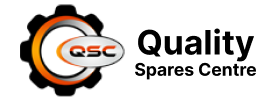Protection Methods for Shot Blasting Machine
Shot blasting uses all kinds of abrasives to give a strong cleaning effect to surface using compressed air or water. It removes burrs instantaneously for texture application, peening or scraping. But the method warrants good protection with a high quality gear to save workers from the effects of hazardous dust and toxic metals that usually come out of the blasting hose.
How are they hazardous?
Working with abrasive media has two types of risks:
- Noise Hazards
- Health Hazards.
Noise hazards: Working with huge compressive force means there is high level of noise that can create significant hearing loss to the work and his comates. Abrasive blasting also gives high pitch sound. To counter this, hearing protection gear needs to be worn before every application as any noise greater than 85 dB must be controlled.

Health Hazards: Since there is a high degree of noise and dust, it comes in direct contact with humans and form health complications. Even the treated surface may contain toxic agents like fine lead paint, silica hazardous to workers. Most of these tiny substances like crystalline, coal and copper slag and steel grit commonly cause lung diseases, cancerous outcomes and major respiratory problems. Slags contain a high amount of toxins in the dust form like cadmium and arsenics.
Protection Comes as a Primary
Different shotblasting materials have different working conditions and each media involves unique treatment methods, however, with each type, health risk does follow. To implement them, a staff trained personnel must be authorized to substantiate action before cure comes as a necessity.
Some engineering requirements warrant working control and protective mechanisms during abrasive activities. These control points can be classified into engineering controls, administrative controls, including personal protection and respiratory protection.
These hygiene practices allow for better monitoring under the controls listed below:
Engineering Controls
- First and foremost, using a less toxic or environment friendly abrasive media will give less dominant after effects on the atmosphere. Water based blasting media may be preferred due to its dust reduction property.
- Use blast rooms for operations to separate this operation from exposure to other workers. Barriers and curtain walls can isolate the blasting room from others. Entry to such areas should be restricted.
- For smaller operations, blast cabinets must be preferred.
- Don’t allow co-workers near the blasting equipment. Unwanted staff must not be allowed in the blast room.
- Proper ventilation like exhaust systems to capture dusk become crucial.
Administrative Controls: Air cleaning machines that can even absorb micron particles in air are excellent cleaning mechanisms can be used to absorb the slightest of dust from the atmosphere.
- Do not blast in an open area as windy conditions can spread the dust to a wider area.
- Only bare necessary workers must be present during blasting.
Ensure proper cleaning and decontamination of tarps and equipment on the workplace.
Personal Protective Equipment:
- To control open exposure, wear protective gear on the body.
- Enhance hearing protection from deafness.
- Covering eye and face is equally important.
- Industrial helmet and leather gloves are essentially meant for skin infection, bacterial growth and itching.
- Safety shoes give added protection to the feet.
Respiratory Protection: Since abrasives tend to stay under atmospheric pressure in the air, the worker must be properly covered in a face mask by helmet, full working attire covering his whole body and gloves. Govt. certified protection respirators are an added advantage from dust inhalation during operation.
Other Practices: In order to sustain good health, it is wise not to expose to the environment immediately after the shot blasting process. Care must be taken to prohibit eating or drinking openly in that environment. Avoid using tobacco products in blasting areas. Otherwise, for routine care and cleanliness, washing hands and face routinely is desired. Vacuum cleaning of contaminated work clothes and floors is an added advantage.


